By Theme:Arts and Literature | Campus Sustainability | Community Perspectives | Development | Economic Analysis | Ecosystem Analysis | Education | Energy | Environmental Justice | Food Systems | Geology of the Watershed | Green Architecture | Green Business | History of the Watershed | Invasive Species | Land Use Patterns | Public Policy | Recreation | Transportation | Water Quality
Water Quality
 Kayaderosseras Creek Watershed: An Examination of Land Use Patterns & Point and
Non-Point Pollution
Kayaderosseras Creek Watershed: An Examination of Land Use Patterns & Point and
Non-Point Pollution
James Caris and Laura Wittman (2005)
This project uses a series of GIS maps to visually convey point discharges as well as land use types that may contribute to non-point pollution within the watershed. Additionally, relevant state and federal permitting and policy procedures are included in order to highlight regulatory aspects applicable to facilities and land use that may affect the quality of the Kayaderosseras watershed.
 Macroinvertebrates as Water Quality Indicators in the Kayaderosseras Watershed
Macroinvertebrates as Water Quality Indicators in the Kayaderosseras Watershed
Leah Capezio and Lauren Mandel (2005)
This project investigated macroinvertebrate populations in microhabitats throughout the Kayaderosseras Creek watershed. Population, diversity and community composition data were analyzed through various indices as a means of assessing water quality throughout the watershed.
Full report is not available. Please contact Karen Kellogg for more information.
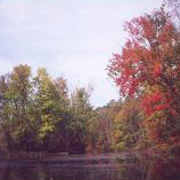 Water Quality Analysis of the Kayaderosseras Creek
Water Quality Analysis of the Kayaderosseras Creek
David Hardy (2005)
Measurements of water quality, including pH, dissolved oxygen, salinity, turbidity, alkalinity as well as concentrations of chloride, nitrates and phosphates, were taken at various locations in the Kayaderosseras Creek system. Sampling was conducted to capture seasonal and pre-/post-storm event variation.
Full report is not available. Please contact Karen Kellogg for more information.
 Evaluating FEMA Flood Map Methodology and the implications of Flooding and Land Use
on Water Quality
Evaluating FEMA Flood Map Methodology and the implications of Flooding and Land Use
on Water Quality
Katie Bronson and Cortlandt Toczylowski (2006)
This project explored the methodology used to develop the 100 year FEMA flood map for the Saratoga Lake watershed and characterized land use patterns within this floodplain. We also assessed the possible influences of land use in the floodplain on the water quality of Saratoga Lake.
Full report is not available. Please contact Karen Kellogg for more information.
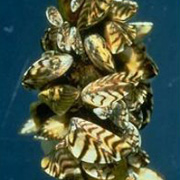 Effect of Zebra Mussels (Dreissena polymorpha) on Turbidity
Effect of Zebra Mussels (Dreissena polymorpha) on Turbidity
Mary Dunham, Emily Voldstad, and Leanna Westfall (2006)
This study assessed how zebra mussels, an invasive species in Saratoga Lake, impact turbidity, which is a measure of water clarity. We also discuss interactions between zebra mussels and other invasive species, and how these relationships affect water quality in Saratoga Lake.
Full report is not available. Please contact Karen Kellogg for more information.
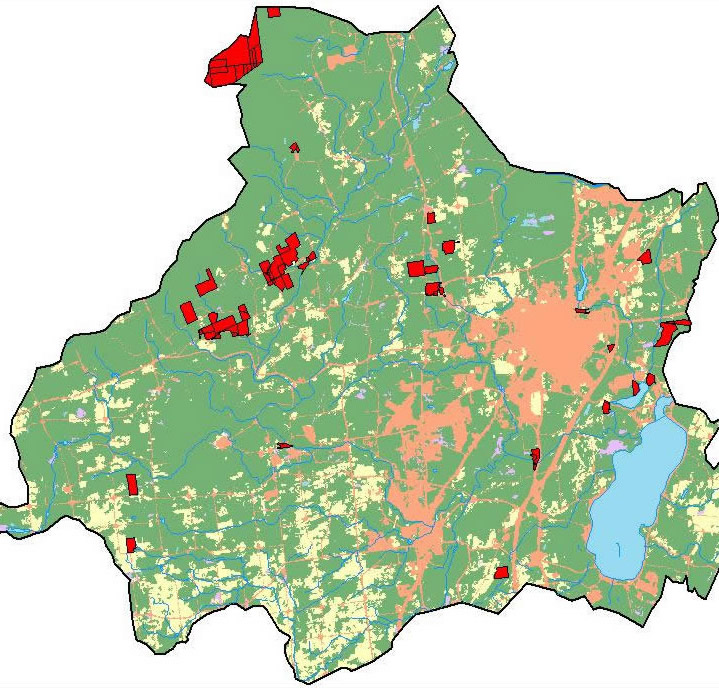 Land Conservation and Water Quality in the Saratoga Lake Watershed
Land Conservation and Water Quality in the Saratoga Lake Watershed
Doug Morin (2007)
This study focused on the link between conserved lands and water quality and quantity within the Saratoga Lake Watershed. The boundaries and vegetation cover of conserved lands were mapped in GIS. Overall, the watershed contains little conserved land, which has potential impacts to water quality.
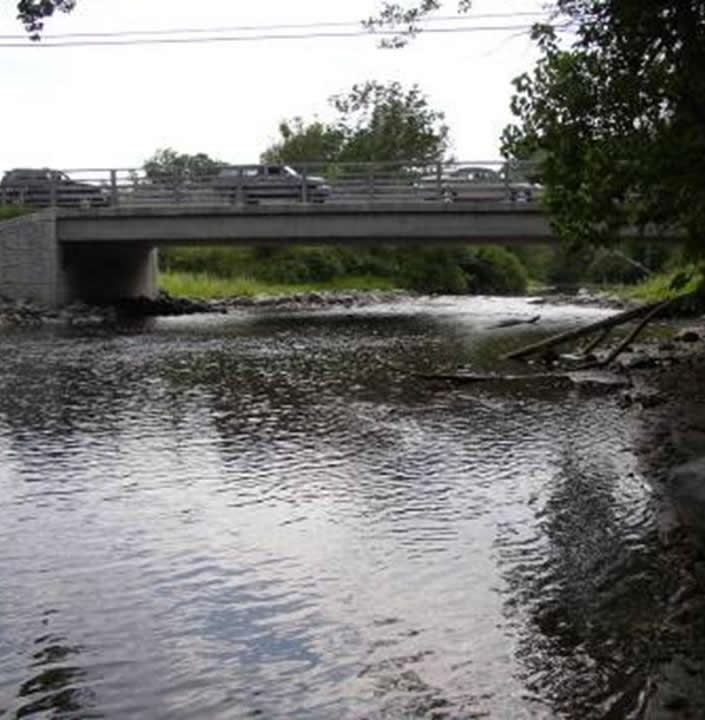 Seasonal and Site Fluctuations in Chloride Levels in Saratoga Lake Watershed
Seasonal and Site Fluctuations in Chloride Levels in Saratoga Lake Watershed
Kristina Connolly and Ashley Hellman (2007)
We measured chloride and conductivity levels in tributaries of the Saratoga Lake watershed and compared our results across seasons and among sites. We found across site variability, potentially linked to road and population density, and an increase in chloride concentrations and conductivity in the summer.
Full report is not available. Please contact Karen Kellogg for more information.
 A Phosphorus Budget for the Saratoga Lake Watershed
A Phosphorus Budget for the Saratoga Lake Watershed
Eric Jenks (2008)
This study created a phosphorus budget for the Saratoga Lake watershed by finding the differences between the amount of phosphorus entering the watershed and the amount exiting the watershed. It found that there is a substantial amount of phosphorus being left behind in the watershed each year by fertilizers and faulty septic systems.
Full report is not available. Please contact Cathy Gibson for more information.
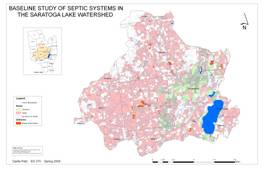 The Environmental Impact of Septic Systems on the Saratoga Lake Watershed
The Environmental Impact of Septic Systems on the Saratoga Lake Watershed
Dante Petri (2008)
I examined the environmental impact of septic systems on the Saratoga Lake watershed. Using GIS, I developed an estimate of the total number of septic systems in the watershed. I estimated the effectiveness of septic system in treating wastes using interviews with local septic contractors and scholarly research.
Full report is not available. Please contact Bob Turner for more information.
The Impact of Turbidity on Sunfish Foraging Efficiencies
Jon DeCoste '05, Doug Morin '07, Jorie Pollak '04 and Conor Taff '05 (2005)
We conducted a series of experiments to evaluate the impact of various turbidity levels on juvenile bluegill sunfish foraging efficiencies. We found that foraging efficiencies are highest at intermediate turbidity levels, and drop significantly at low and high turbidity levels. We hypothesize that the decrease in foraging efficiencies in clearer water is due to predator avoidance, while the decrease in foraging efficiencies at higher turbidity levels is due to the poor visual environment.
Full report is not available. Please contact Karen Kellogg for more information.
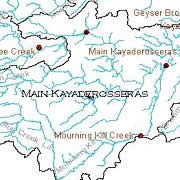 Water Quality Monitoring in the Kayaderosseras Creek and Saratoga Lake:Past, Present and Future
Water Quality Monitoring in the Kayaderosseras Creek and Saratoga Lake:Past, Present and Future
Kristina Connolly '07 and Judy Halstead, Department of Chemistry (2006)
The project has three related goals: collecting, reading and analyzing past sources of water quality data and monitoring in Saratoga Lake's watershed and surrounding regions, conducting a field and laboratory assessment of current water quality parameters in the tributaries of Saratoga Lake, and recommendations for future water quality monitoring projects.
Full report is not available. Please contact Judy Halstead for more information.
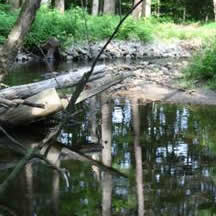 The Role of Optical Brighteners in the Detection of Local Anthropogenic Pollution
The Role of Optical Brighteners in the Detection of Local Anthropogenic Pollution
Lukiana Anka-Lufford '10 and Judy Halstead, Department of Chemistry (2007)
Optical brighteners are now extremely common in laundry detergents. Since wastewater from laundry machines generally contains these dyes and fluorescence is relatively easy to detect, the use of optical brighteners to detect leaking septic tanks and leaking sewage systems seems promising. In the laboratory both standards containing laundry detergent and field samples are analyzed with the Skidmore Department of Chemistry's Shimadzu scanning spectrofluorimeter in an effort to determine the presence of optical brighteners.
Full report is not available. Please contact Judy Halstead for more information.
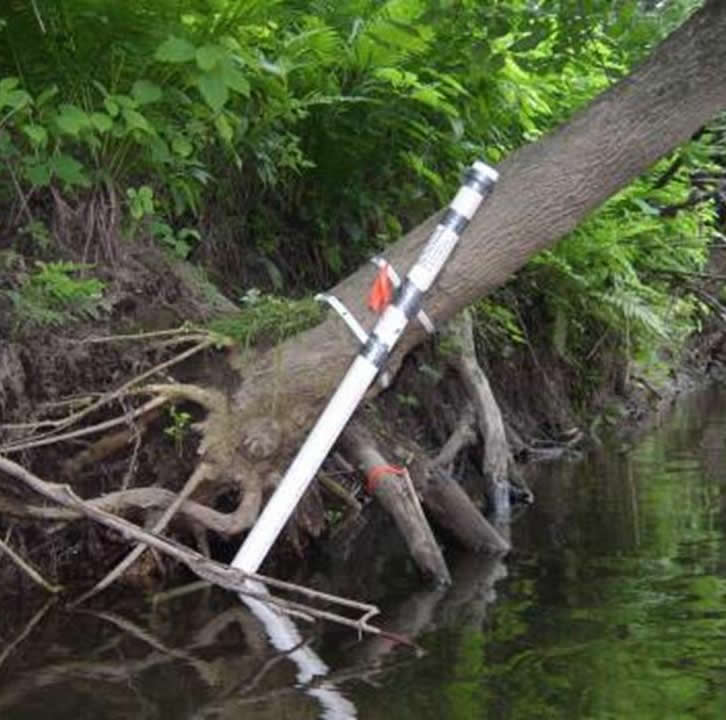 Water Quality Monitoring in the Kayaderosseras Creek and Saratoga Lake
Water Quality Monitoring in the Kayaderosseras Creek and Saratoga Lake
Alicea Cock-Esteb '09, Alexandra Furman '09, Judy Halstead, Department of Chemistry, and Kim Marsella, Environmental Studies Program (2007)
Water quality parameters were determined for one lake and various tributaries throughout the Kayaderosseras Creek watershed. Field measurements included dissolved oxygen, temperature, conductivity, and pH. Samples were collected and subsequently analyzed for total phosphorous, phosphate, total mitrogen, nitrate, dissolved organic compounds, and total suspended solids. This study is a part of an ongoing water monitoring study conducted through the Skidmore College Water Resources Initiative.
Full report is not available. Please contact Judy Halstead for more information.
The Upper Hudson River as a Supplemental Drinking Water Source: Mapping Factors Affecting Water Quality Using Geographic Information Systems
Hannah Phillips '09 and Bob Jones, Department of Economics (2007)
We used GIS to map natural and human determined factors affecting water quality on the Upper Hudson River. By analyzing regional geology, hydrology, zoning, patterns of development, and town comprehensive plans within the watershed, we have created a ten-town build-out analysis that identifies areas that are prone to development. These data will contribute to an analysis of the viability of the Upper Hudson River as a supplemental drinking water source for Saratoga Springs in the near future.
Full report is not available. Please contact Bob Jones for more information.
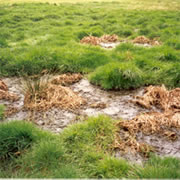 Septic System Survey of Residents of Loughberry Lake
Septic System Survey of Residents of Loughberry Lake
Elizabeth Amira Kennedy Streeter (2009)
Unlike government run sewage treatment plants, septic system care and maintenance are the responsibility of individual homeowners. Proper maintenance is essential to maintaining proper functioning and preventing water pollution. To better understand behavior and septic maintenance practices, I conducted a survey of the residents who lived closest to the lake and also own septic systems.
Full report is not available. Please contact Cathy Gibson for more information.
 Rethinking Wastewater Treatment: An Examination of the Saratoga Wastewater Treatment
Facility
Rethinking Wastewater Treatment: An Examination of the Saratoga Wastewater Treatment
Facility
Kathleen McConkey and Molly Nowak (2009)
Most people rarely think about where their water goes after they use it. We've taken a closer look at this important aspect of everyday life and environmental protection by examining the Saratoga wastewater treatment facility and putting it in context with other operations in New York State.
Full report is not available. Please contact Bob Turner for more information.
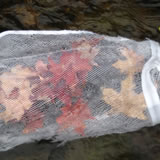 Breaking it down: The Influence of Relative Nitrogen and Phosphorus Availability
on Leaf Litter Decomposition and Macroinvertebrate Communities in Two Small Streams
within the Saratoga Lake Watershed
Breaking it down: The Influence of Relative Nitrogen and Phosphorus Availability
on Leaf Litter Decomposition and Macroinvertebrate Communities in Two Small Streams
within the Saratoga Lake Watershed
Alicea Cock-Esteb and Hannah Harris (2009)
When leaves fall into streams, they are incorporated into the food web through consumption by microorganisms and macroinvertebrates. Our study examined how the relative availability of nitrogen and phosphorous influenced the rates of leaf litter decomposition via macroinvertebrate communities and microbial respiration in two small, wooded streams in the Saratoga Lake Watershed. We found that a higher relative availability of nitrogen and phosphorous corresponds to higher decomposition rates although the macroinvertebrate community seems to be more influenced by other factors.
Full report is not available. Please contact Cathy Gibson for more information.
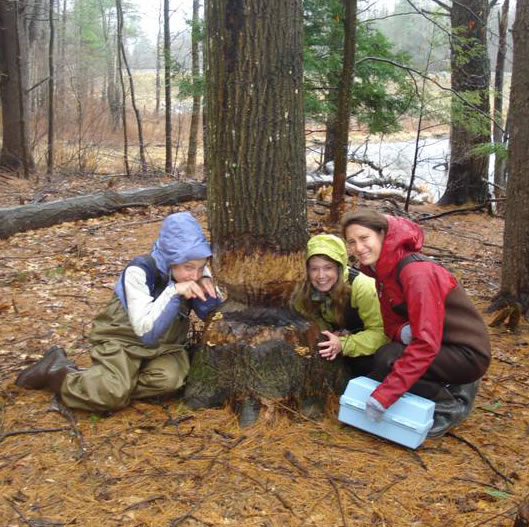 The Influence of Beavers on Sediment Storage and Stream Turbidity in the Saratoga
Lake Watershed
The Influence of Beavers on Sediment Storage and Stream Turbidity in the Saratoga
Lake Watershed
Stephanie Abrams, Lindsay Bourgoine, and Alexandra Furman (2009)
This study examines the repopulation of beavers within the Saratoga Lake Watershed through pond density and how their ecosystem engineering has geomorphically impacted water bodies. The three beaver ponds investigated stored large quantities of sediment and the amount of suspended particles decreased downstream of the ponds. Therefore, increases in pond density result in changes in the way sediment is stored in the watershed.
Full report is not available. Please contact Cathy Gibson for more information.
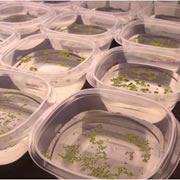 Phytoremediation of Nutrient-Controlled Water Using Duckweed and Water Fern
Phytoremediation of Nutrient-Controlled Water Using Duckweed and Water Fern
Dawn Harfmann and Jakob Schenker (2010)
Phytoremediation is a way to use plants to remove nitrogen and phosphorus in water
bodies, nutrients which could cause eutrophication. Duckweed, water fern, and a combination
of both plants were cultivated in varying nutrient environments and analyzed for nutrient
uptake patterns. These environments had nitrogen levels characteristic of eutrophic
water bodies and phosphorus levels characteristic of oligotrophic and mesotrophic
water bodies. Nitrogen concentrations decreased by up to 87% in the duckweed treatment.
Possible synergistic effects between the two species were observed, as the combination
treatment reduced nitrogen levels to 11% below expected values.
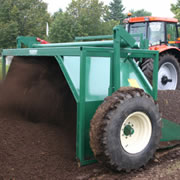 Composting at Skidmore: Turning our Waste into a Resource
Composting at Skidmore: Turning our Waste into a Resource
Will Coffey and Nadine Dodge (2010)
Skidmore College produces a substantial amount of organic waste in the form of food scraps, horse manure, and lawn maintenance byproducts that present both economic and environmental concerns to the College. We conducted a comprehensive study to ascertain how these wastes can be turned into a valuable economic and environmental resource through composting. After completing a study of composting at peer institutions, analyzing available composting technologies, and conducting a cost-benefit analysis, we determined that a windrow composting system will be the most cost-effective waste management system for Skidmore. The final result of our project is a detailed proposal that outlines how such a system can be implemented.
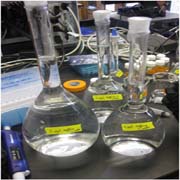 Stimulated Water Bodies: Development of a Protocol for Testing for Caffeine and Nicotine
in Surface Water Using SAIL
Stimulated Water Bodies: Development of a Protocol for Testing for Caffeine and Nicotine
in Surface Water Using SAIL
Ellen Agnew and Claire Superak (2011)
In order to determine whether caffeine and nicotine contaminants were present in our local water sources, we developed a protocol for quantifying caffeine and nicotine using the Skidmore Analytical Interdisciplinary Laboratory (SAIL). We sampled water downstream of areas with dense septic tank clusters in the Saratoga Lake watershed and analyzed these samples using liquid, gas, and ion chromatography.
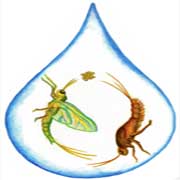 Citizen BioMAK: A Volunteer Guide to Biological Monitoring and Assessment of the Kayaderosseras
Creek
Citizen BioMAK: A Volunteer Guide to Biological Monitoring and Assessment of the Kayaderosseras
Creek
Katherine Bohn and Sarah Sproviero (2011)
Water quality is constantly fluctuating, and New York State’s monitoring resources are inadequate. In collaboration with the Saratoga County Stormwater Management Coordinator, we developed BioMAK, a citizen-based biomonitoring guide instructing volunteers how to use macroinvertebrate populations to assess Kayaderosseras Creek water quality. Ideally, data collected by community members will eventually supplement limited government data, while also educating citizens
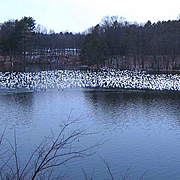 The Toxicology of Saratoga's Drinking Water: Herbicides Impact Aquatic Animals
The Toxicology of Saratoga's Drinking Water: Herbicides Impact Aquatic AnimalsPaige Reeves and Sarah Hunter (2012)
Our drinking water reservoir, Loughberry Lake, is treated with a chemical algicide, copper sulfate. We investigated the effects of copper sulfate on non-target aquatic invertebrates by exposing aquatic snails, insects, and leeches to one of three copper concentrations, all below the limit set by the EPA. All three types of organisms experienced altered metabolic responses, and ultimately increased mortality rates, in the presence of copper sulfate relative to controls with no copper sulfate added.
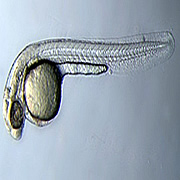 Side Effects May Include: The impacts of trace pharmaceuticals and personal care products
on zebrafish (Danio rerio)
Side Effects May Include: The impacts of trace pharmaceuticals and personal care products
on zebrafish (Danio rerio)Nonie Crossnohere, Joe Marto, and Julia Sabatino (2014)
Pharmaceuticals and personal care products (PPCPs) are becoming increasingly present in U.S. waterways due to incomplete removal at wastewater treatment plants. This study examines the effects of high concentrations of caffeine, fluoxetine, and 17-β-estradiol on zebrafish. We found that while the zebrafish experienced increased metabolic stress when exposed to concentrations of the compounds, they did not experience developmental alterations that could influence survival.
Full report is not available. Please contact Karen Kellogg for more information.
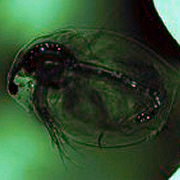 Distribution and consequences of microplastics, a new anthropogenically derived contaminant
in streams
Distribution and consequences of microplastics, a new anthropogenically derived contaminant
in streamsMargie Pfeffer and Jordan Stark (2015)
Microplastics are widespread in large water bodies including oceans, lakes and rivers. We sampled streams in small towns in Upstate New York to determine the breadth of microplastic pollution and the contributions of both point and nonpoint sources of microplastics. After demonstrating the presence of microplastics in these small systems, we exposed Daphnia magna (water flea) to microplastics to determine whether they could be incorporated into the food web or have negative health effects.
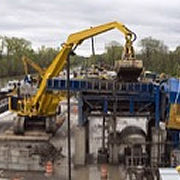 Overseeing Oversight: Citizen Advisory Groups and the Hudson River PCB Superfund Site
Overseeing Oversight: Citizen Advisory Groups and the Hudson River PCB Superfund SiteNick Hartmann, Sarah Hoenig, and Nandini Srinivasan (2015)
We gathered data about the Community Advisory group (CAG), a unique form of oversight designed to ensure the removal of PCBs from the Hudson River. Our results indicate that compared to traditional oversight, CAG members have more dedication, technical capacity, ability to expand the cleanup project, and ability to share knowledge. However, there is lack of public involvement, a lack of member commitment, and stakeholder bias.
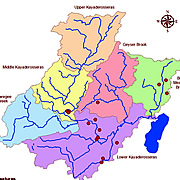 Urbanization in the Kayaderosseras Creek Watershed: Impacts on Stream Temperature
Urbanization in the Kayaderosseras Creek Watershed: Impacts on Stream TemperatureJessica Dunning, Zachary Gordon, and Alice Wu (2015)
Kayaderosseras Creek is a trout stream in Saratoga County, but trout are cold-water fish and increased urbanization in the watershed may be increasing stream temperature. We ran a thermal urban runoff model on 15 sites throughout the watershed. Percent impervious cover at the sites had a large impact on both runoff and stream temperatures. Low-impact development and other techniques for reducing runoff are needed to maintain trout habitat in the watershed.
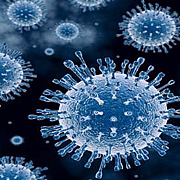 Sinister Superbugs Skulking in Streams?
Sinister Superbugs Skulking in Streams?Hannah Bachrach, Anna Gubbins, and Sarah Turner (2015)
Upstate New York has a history of industry dumping its heavy metal waste into streams. Active heavy metal pollution can lead to antibiotic resistance in stream microbial communities, but it is unknown if legacy heavy metal pollution can have the same effect. We grew stream bacteria on four different treatments to determine the effects of these legacy heavy metals and other urban pollutants on antibiotic resistance in stream bacteria and identified microbial community shifts.
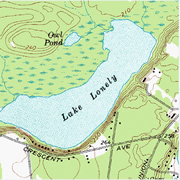 Nitrogen and sediment dynamics in wetlands and streams along an urbanization gradient
within the Lake Lonely watershed
Nitrogen and sediment dynamics in wetlands and streams along an urbanization gradient
within the Lake Lonely watershedBen Freiberg, Nicolas Graver, & Kat Klammer (2016)
The ability of wetlands to sequester or convert reactive nitrogen is an important
control of anthropogenic nutrient inputs. We observed cool weather nitrous oxide
flux, denitrification potential, nitrogen mineralization rates, and sediment patterns
within two New York wetland streams. The N2O flux and N-mineralization rates had no
significant relationships to temperature. The size of sediments and thus availability
of denitrifying bacteria habitat may determine rates of microbial nitrate processing
within wetland streams.
Full report is not available. Please contact Karen Kellogg for more information.
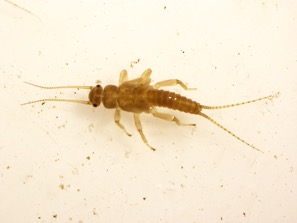 The impact of winter temperature increase on aquatic macroinvertebrates
The impact of winter temperature increase on aquatic macroinvertebrates
Ben Curell, Angelea McPartlin, and Maurah Steinmetz (2018)
Aquatic macroinvertebrates play an essential role in stream ecosystems. Given the potential metabolic demand, we investigated the impact of increased winter stream temperatures, due to climate change, on aquatic organisms. Macroinvertebrate samples were collected from headwaters and mainstem sites at the Kayaderosseras and Battenkill Rivers in February and March. Organisms in the families Taeniopterygidae, Nemouridae, and Simuliidae may be disproportionately impacted because these families contain many cold-adapted, winter and early spring-emergent species.
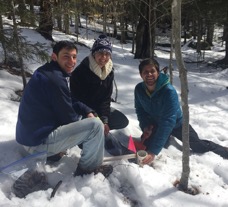 Road salt deposition and retention in the riparian zones: High impact in the High
Peaks?
Road salt deposition and retention in the riparian zones: High impact in the High
Peaks?
Daniel Casarella, Connor Christoffersen, and Jennifer Cristiano (2018)
Road salt (NaCl) application in the Adirondack Park (AP) is expected to increase with climate change. We assessed the impact of NaCl on riparian soils in the AP because riparian zones are vital to protecting AP waterways. We used soil samples from Johns Brook Tributary (JBT), which is not exposed to winter salting, and Cascade Brook (CB), which is. CB soils had higher Na and Cl concentrations. JBT had higher concentrations of available ammonium and phosphate. There were no statistically significant differences in soil macroaggregates or microbial communities.
 Weathering waste: Combined sewer overflows, community impacts, and climate change
in New York’s Capital District – Part A
Weathering waste: Combined sewer overflows, community impacts, and climate change
in New York’s Capital District – Part A
Karen Nolan and Carolyn Koestner (2018)
Currently little data exist on the impacts of CSOs on winter water quality and of climate change on CSO events. We investigated the impacts of CSOs on water quality from November to March in the Capital District. Nitrate and phosphate levels were steady, however concentrations for ammonium were significantly higher in dry weather months. None of our samples, including non-CSO event samples, passed EPA standards for Escherichia coli, and few samples passed for Enterrococcus. Low turbidity levels did not necessarily indicate safe bacteria levels. Climate change is predicted to increase the frequency of CSO events in this region and extend the season of CSO events into the winter months.
Julia Cavicchi, Olivia Golden, and Anne Pfeifenberger (2018)
New York’s Capital District has aging infrastructure and struggles to address the impacts of combined sewer overflows. We spoke with stakeholders at various levels and found that constituents were largely unknowledgeable of CSOs and the surrounding concerns, despite being increasingly engaged in Hudson River water and riverfront activities. We suggest a more holistic approach to combined sewer management that accounts for greater socio-ecological equity, increased collaboration, and considers alternatives to traditional sewage management practices.
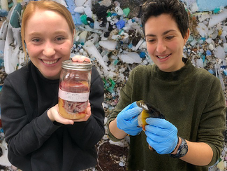 Fishing for Microplastics: Assessing microplastic ingestion by freshwater fish: A
Review
Fishing for Microplastics: Assessing microplastic ingestion by freshwater fish: A
Review
Stella Solasz, Kailey Toia (2020)
Microplastics (MP) are becoming increasingly present in freshwater systems due to improper disposal of plastic products, leachates from landfills, and incomplete removal from wastewater treatment plants. This study examines the presence of MPs in freshwater fish intestines in the NYS Hudson Watershed. In response to Covid-19 we wrote a review aiming to harmonize methodologies, compare MP contamination in fish species, and provide parameters with GIS that aid in focusing study areas.
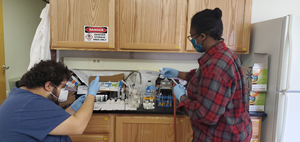 Macro solutions to micro problems: Exploring Biological Degradation of Endocrine
Disrupting Chemicals Commonly Found in Wastewater
Macro solutions to micro problems: Exploring Biological Degradation of Endocrine
Disrupting Chemicals Commonly Found in Wastewater
Ruthann Richards & Mateo Schwartz-Torres (2021)
Detectable concentrations of pharmaceuticals, pesticides, personal care products, and microplastics are ubiquitous in surface waters around the globe. Collectively, these pollutants are called emerging micropollutants (EMP). This project used white rot fungi, algae, and bacteria to evaluate biological remediation of three EMPs, triclosan, atrazine, and ketoprofen, found in sewage effluent. Experimental results were inconclusive due to instrumentation detection limits, but fungi and algae were able to grow in the presence of contaminants.
Paper is not available. For information, please contact the ESS Program Director.
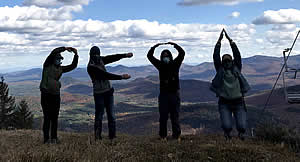 Yellow Snow Is the Least of Your Worries: The Presence and Persistence of PFOA on
Ski Hills in Upstate NY
Yellow Snow Is the Least of Your Worries: The Presence and Persistence of PFOA on
Ski Hills in Upstate NY
Jacob Adams, Gillian Brogan, Elle Ping & Sammi Smith (2021)
Perfluoroalkyl substances (PFAS) are detrimental to both human and environmental health. Many downhill ski waxes contain PFAS, as it reduces the friction between skis and snow. We collected soil, leaf, and snow samples from ski mountains in upstate NY to evaluate the presence and persistence of ski wax PFAS. Sample analyses could not sufficiently detect concentrations at or below the EPA threshold, and we could not draw definitive conclusions regarding ski wax PFAS in NY state.
Paper is not available. For information, please contact the ESS Program Director.